In northern Hyogo, there is a park with special scientific significance hiding just a short trip from JR Kinosaki or JR Toyooka Stations. This is Genbudō Park (玄武洞公園), a unique group of five basalt caves, named after four ancient Chinese mythological creatures.
This is Genbudō Park (玄武洞公園), a unique group of five basalt caves, named after four ancient Chinese mythological creatures.
I stopped here on the same day my mother and I visited the Kinosaki Onsen town, since they're pretty close to each other. I had been here once before, two years earlier, but I was so close that I decided to go again.
From Kinosaki, you can take a bus, a taxi, or a combination of a train and boat, weather permitting, to get to the park and museum. I recommend renting a bicycle though, since the ride from Kinosaki is just fifteen minutes.
It was already June, but there were still some camellias in bloom, as well as several other beautiful flowers. And because we arrived in the evening, there weren't many people left, so we were able to enjoy a nice, quiet walk together. I really enjoy going to parks like this because there's usually no admission fee and the hours are flexible.
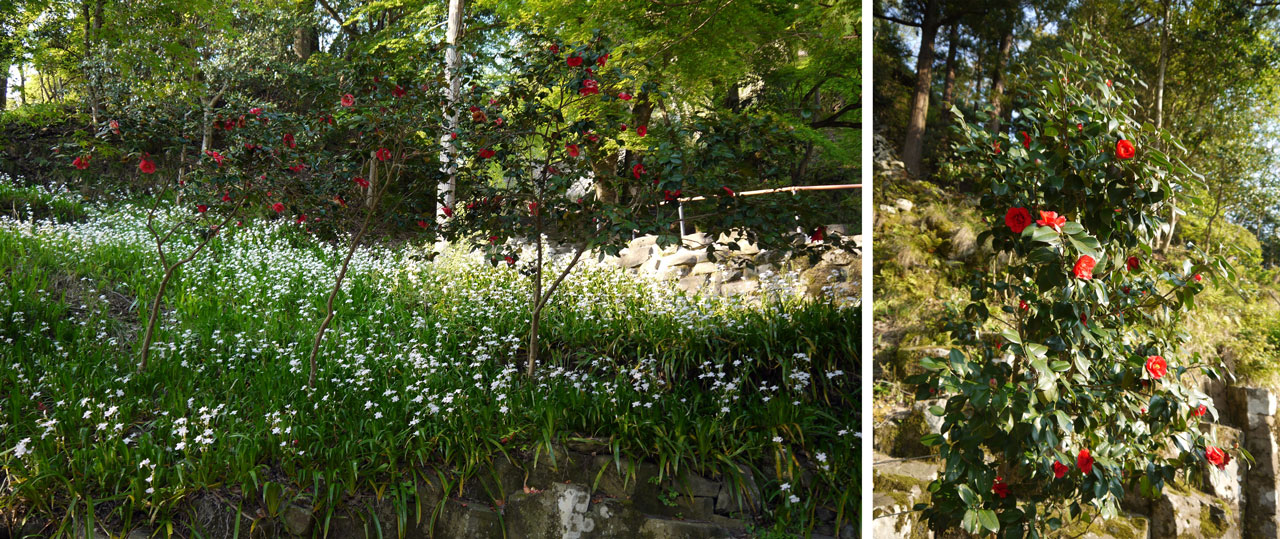
Anyway, let's get into the history of the park itself.
Geologists discovered that in the Quarternary period, which is a fancy geological term for the time period between 2,588,000 years ago to today, alkali olivine basalt activity occurred on the coast of the Sea of Japan. Evidence for this activity was found all the way down to the southwest of Japan and Hyogo just happens to be the easternmost point where this evidence has been found.
This geological activity caused a volcanic eruption roughly 1,600,000 years ago. The lava from this eruption solidified when it cooled, but it also contracted, forming cracks. Those cracks would grow upward, the opposite direction that the lava had flowed from the earth. These became columnar joints, seemingly shooting up out of the ground in a honeycomb pattern. This phenomenon and pattern led to some really important scientific discoveries later on.
The First Cave: Genbudō
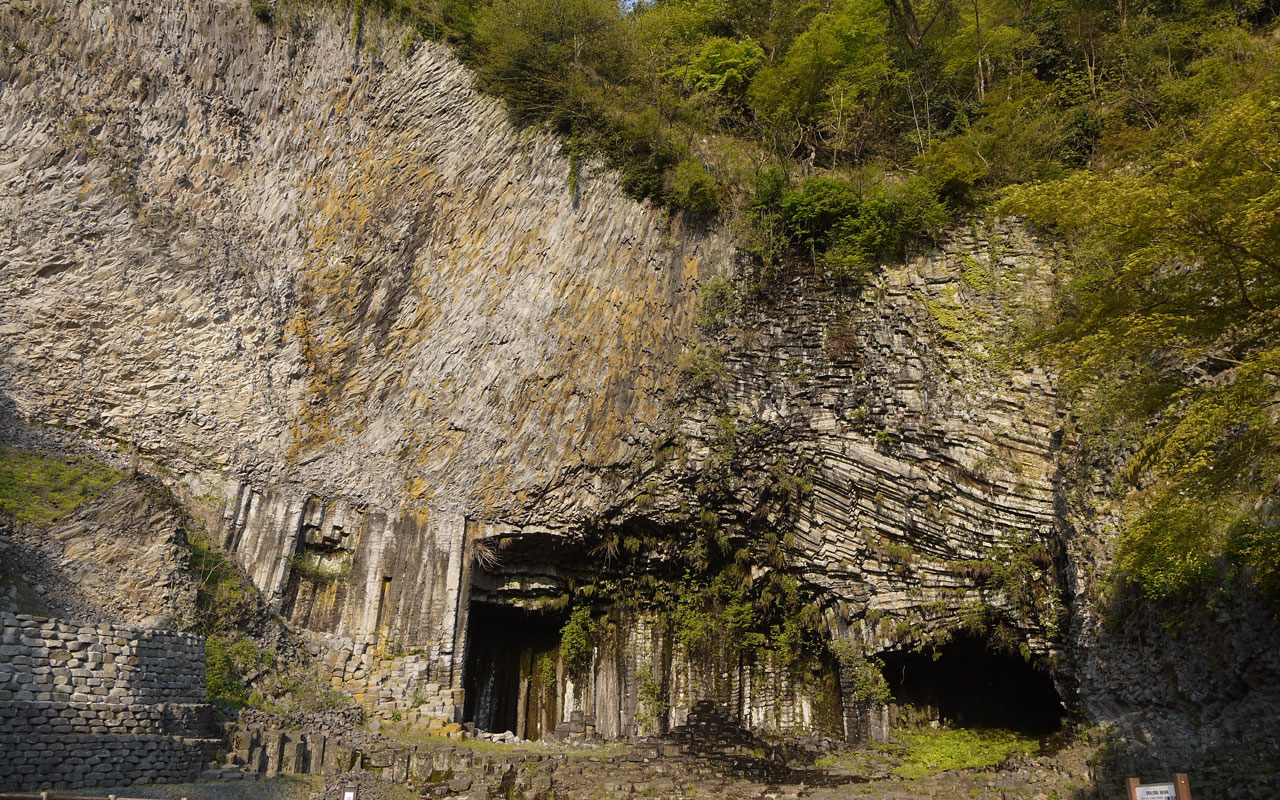
As I said, we arrived late in the afternoon so there weren't many people around. My mother and I followed a series of stone steps until we came to the first cave. This cave, called Genbudō (also the name of the park and museum) is the largest of the five. The rock formations here look almost alien. They're so remarkable in person that all we could say was, 「すこいねー」(How cool…).
As we stood in awe, we happened to overhear a tour guide leading a few curious tourists. When he began speaking, we inched closer to listen.
In 1807, a Confucian scholar named Shibano Ritsuzan visited this cave and decided to name it Genbudō, because he thought it looked like one of the four Chinese legendary animals: Genbu the Black Tortoise.
In 1807, a Confucian scholar from the Tokugawa Shogunate, named Shibano Ritsuzan (柴野栗山), visited this cave and decided to name it Genbudō, because he thought it looked like one of the four Chinese legendary animals: Genbu 玄武 the Black Tortoise.
Then in 1884, a Tokyo University geologist, named Koto Bunjiro (小藤文次郎), was tasked with choosing the Japanese name for basalt rocks. He decided to go with Genbugan 玄武岩 which literally means Genbu-rock, after this cave's name 玄武洞 (Genbu+cave).
In 1929, a Japanese geophysicist and paleomagnetologist, named Matsuyama Motonori (松山基範), discovered the polar magnetic alignment of this basalt is in the opposite direction of the Earth's current magnetic polarity. From this he theorized the direction of the Earth's magnetic poles must have once been the opposite of today's. And there must have been a shift when Genbudō was still forming.
This theory was later published and is now widely accepted. We now acknowledge the Earth's poles were switched at some point between 2.6 million years ago and 780,000 years ago. This period of time is now called the Matsuyama Reversed Polarity Epoch (松山逆磁極期), in Japanese. That's a ton of history packed into five caves.
Guides
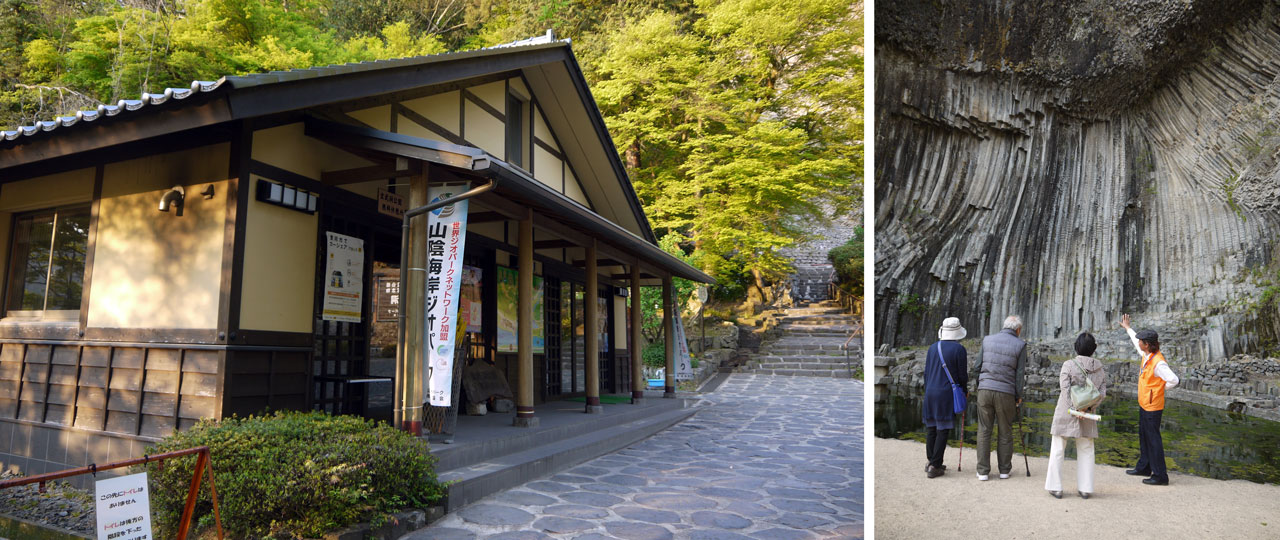
While we weren't technically part of the tour group, we did learn a lot from tagging along with one. If you'd like to get a tour, there are volunteer guides during the day. They run from 9:00 a.m. to 4:00 p.m. (that's the very latest you can get one). And while the guide we spoke to said there is no time limit for enjoying the park, but the rest area does close at 5:00 p.m. That's also when the guides leave the park site.
Also keep in mind that if you stay late it will get too dark to see anything, which kind of defeats the purpose of being at a park.
The guided tours were free when I visited in 2014, but when I went back this time they required a small fee. It's ¥300 per person for tours that visit two of the five caves, and ¥500 per person for tours that visit all five.
They also offer a discount for groups of sixteen or more. And honestly, I think they deserve to earn some money, considering the tours are so long and they're all volunteers. The guide I spoke to said they aren't able to do tours in English, but things may change as time goes on. (Plus this is good practice for your Japanese studies!)
There is signage throughout the park in English though, so you won't be completely in the dark if you're worried about your Japanese.
The Second Cave: Seiryūdō
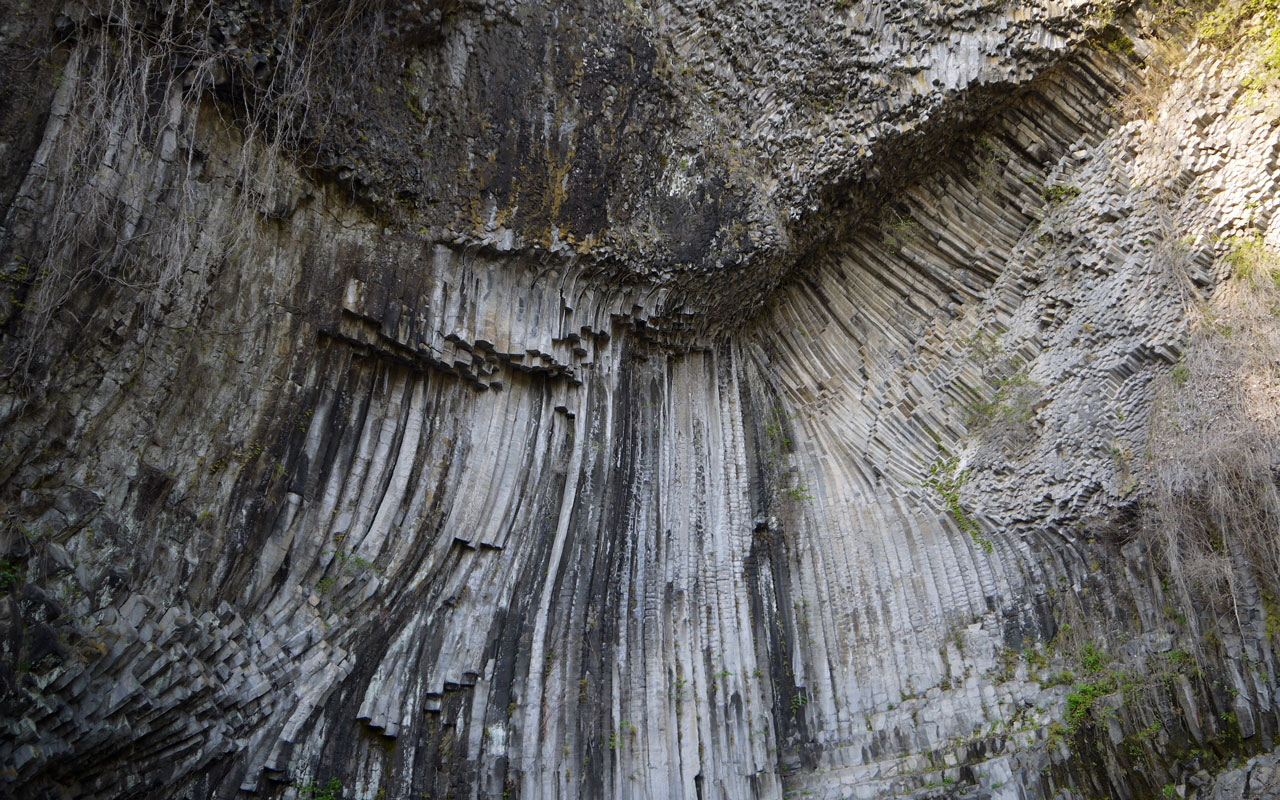
Even though the tour had already started (and it was the last one of the day) we were able to join in since they only had one cave left to visit. If you take the path to the right side of Genbudō, you come to Seiryūdō 青龍洞, named after the legendary Azure Dragon.
The guide told us Genbudō and Seiryūdō were designated as national treasures in 1931. Apparently this cave is thirty-three meters high, and boasts the longest columnar joints of all five caves. The joints are usually only about fifteen meters high. If you aren't familiar with meters, fifteen meters is about the size of 7.5 Michael Jordans. That's tall!
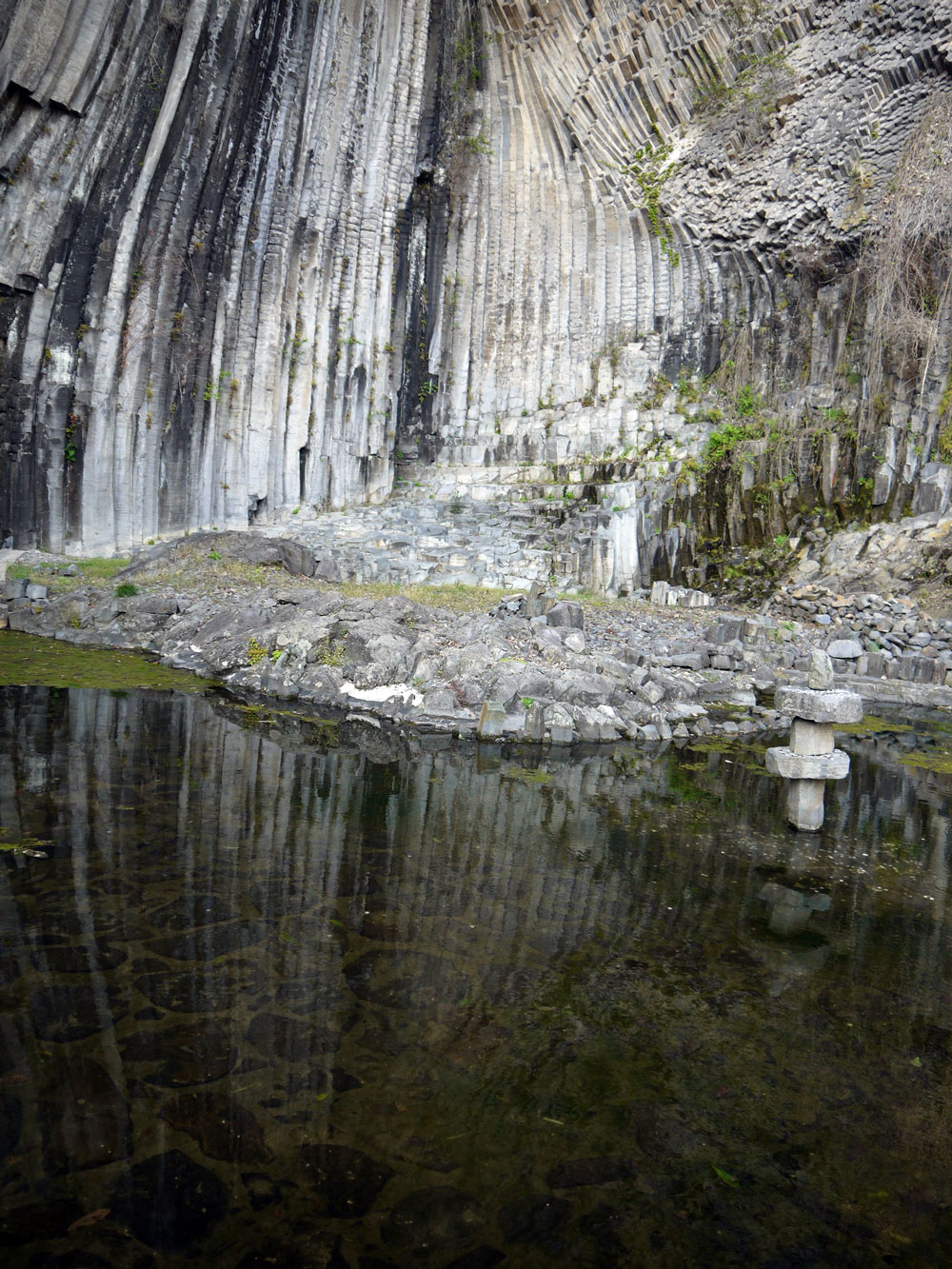
And in this cave the long columns also reflect beautifully in the water below.
The Third Cave: Byakkodō
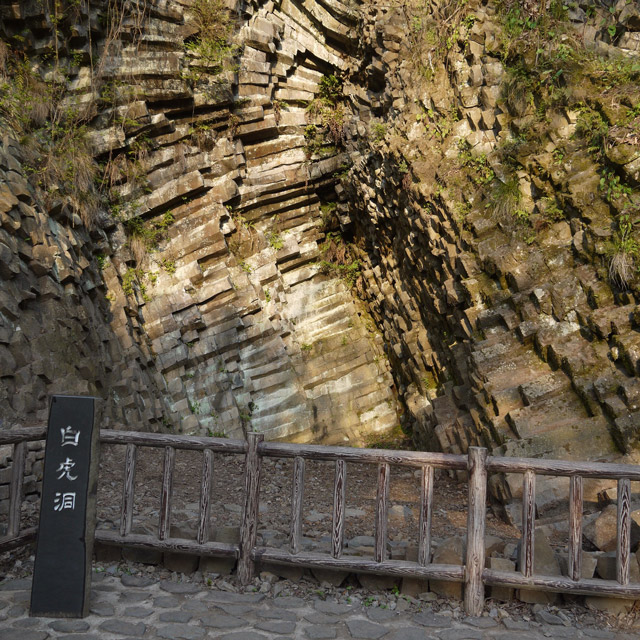
If you take the path to the left of Genbudō, you will see three caves. The first one is Byakkodō 白虎洞, named after the legendary White Tiger.
The tour guide was technically finished with his tour—it was close to 5:00 p.m. and Seiryūdō was supposed to be his last stop—but he kept walking with us. It was extremely nice of him to go out of his way to help us like this.
Unlike the columnar joints of Genbudō and Seiryūdō, which were mostly vertical, Byakkodō's were horizontal. And you are able to walk very close and see the cross-sections and details.
The Fourth Cave: Minami-Suzakudō

The second of the three grouped caves is Minami-Suzakudō 南朱雀洞, or "South Suzaku Cave," named after the final legendary creature: the Vermillion Bird (sometimes referred to as a phoenix).
This one lets you get quite close as well. You can look right up into the cave from the path.
The Fifth Cave: Kita-Suzakudō
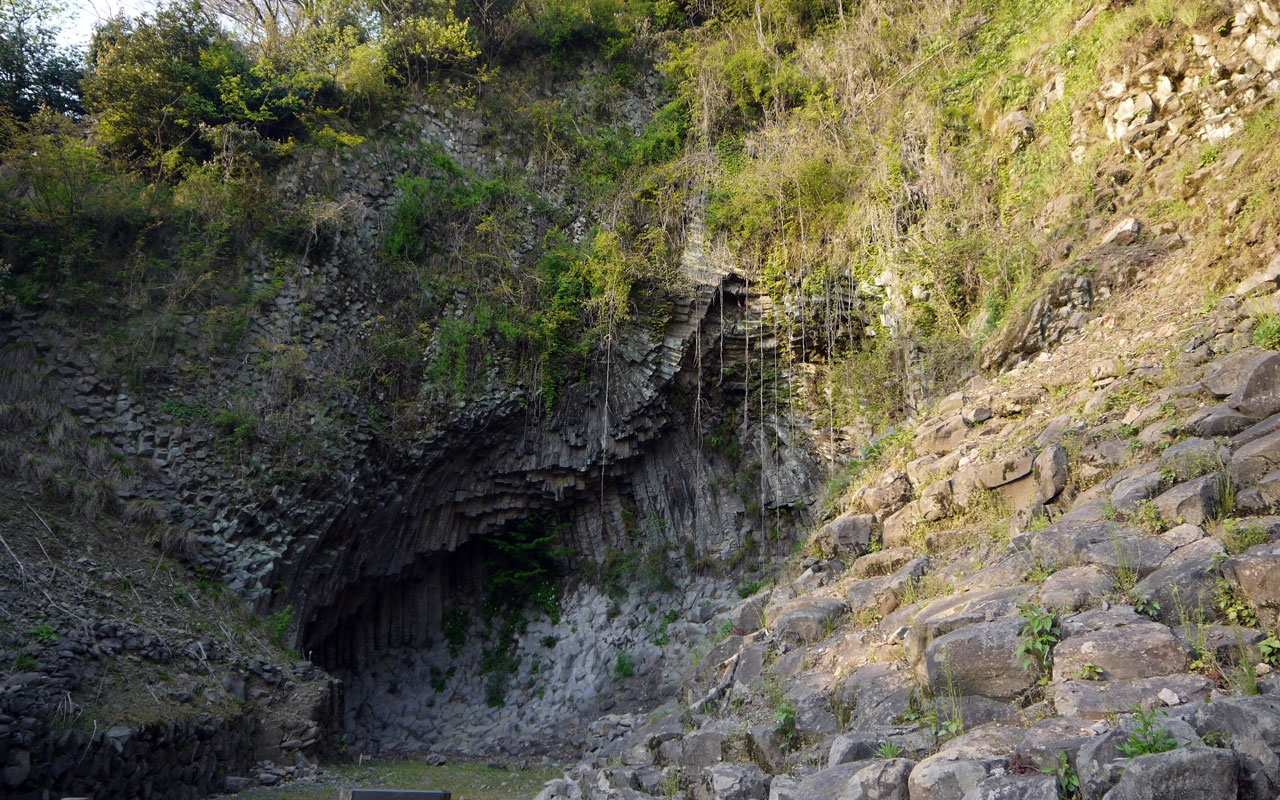
The final cave is called Kita-Suzakudō 北朱雀洞, or "North Suzaku Cave." (They ran out of legendary creatures, I guess, but these two caves are small and very close to one another, so it makes sense they're both Suzaku.)
This cave is particularly special because it's said to have an image of its namesake in the rocks. Can you see how the vertical columns start at the bottom and gradually change to horizontal as they go up? The guide told us that if I took a picture from an elevated position, it would look like Suzaku, the Vermillion Bird. So I tried.
Can you see the bird in the picture above?
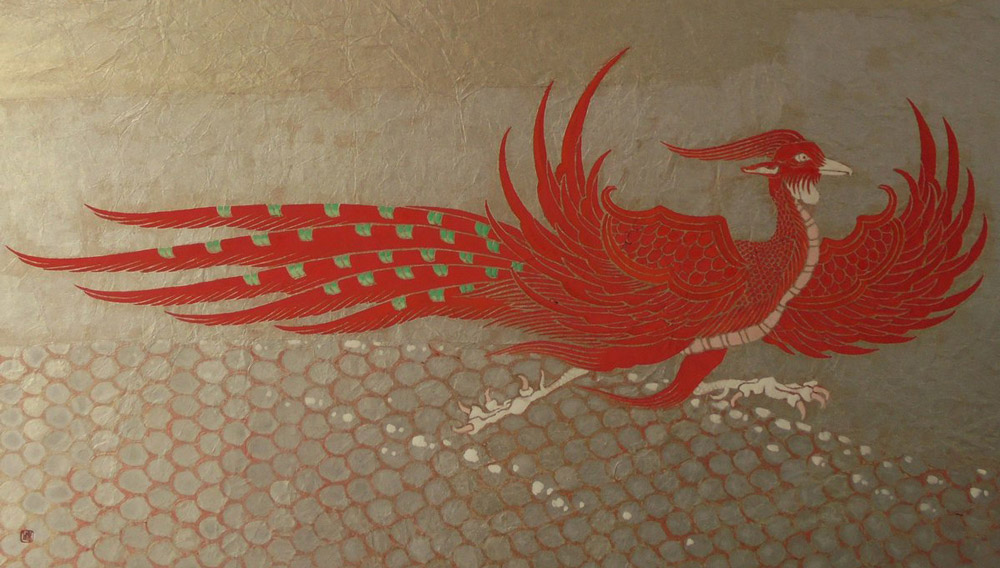
Honestly, I have a really hard time seeing things like this but with Suzakudō I could see it immediately!
Pentagon and Hexagon Rocks

Now that we've been to all five caves, I want to say a bit more about the actual rocks you'll see throughout the park. While my mother and I were walking, we saw a lot of rocks shaped like pentagons and hexagons, not just in the caves, but on the ground as well. The tour guide told us these rocks are called Rokkaku-ishi/Rokkaku-seki 六角石 or Nada-ishi 灘石. They form when the columnar joints crack transversely (a cross-section crack).
In the Edo period, people mined these rocks at Genbudō and used them for various practical applications. One example is on the banks of the nearby Otani River, they were used to build walls to protect from floods and erosion. Another example, which we learned in the museum, was their use as stone weights placed on tsukemono (Japanese pickles).
Gen-san and the Museum
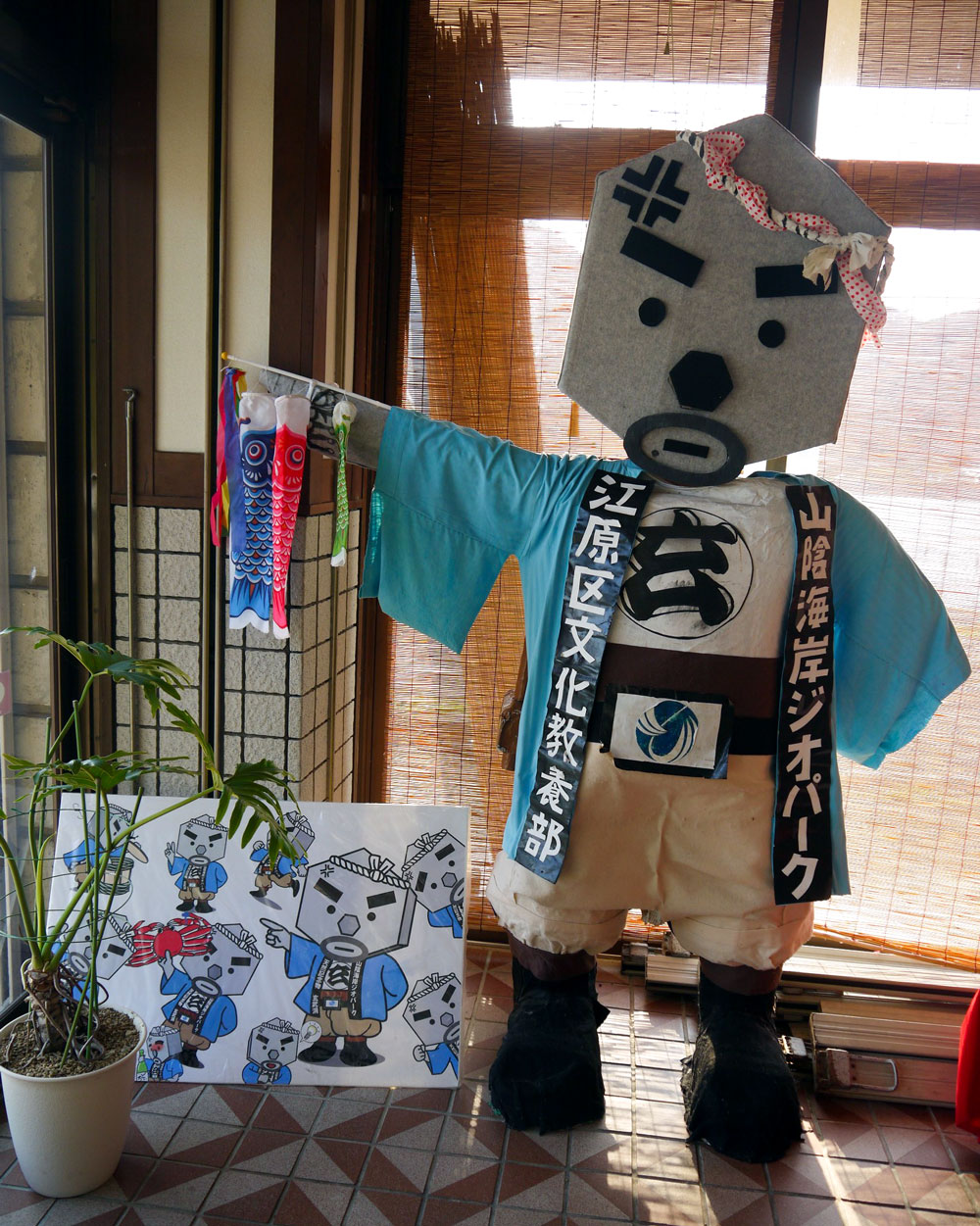
This is Japan, so of course there is a mascot for this place. His name is Gen-san. He's certainly not the friendliest looking mascot I've ever seen, but I still think he's kinda cute.
Although I didn't get a good photo, there is a museum right at the front of the park, which is open from 9:00 a.m. to 5:00 p.m. It is small, full of stones and historical information and something special…
A mascot! This is Japan, so of course there is a mascot for this place. His name is Gen-san. He's certainly not the friendliest looking mascot I've ever seen, but I still think he's kinda cute. He's waiting for you from 10:30 a.m. to 2:00 p.m. every Saturday, Sunday, and Monday.
But if you miss him, don't worry. If the museum is open and no one is manning Gen-san, you can become him. For ¥200, you can put on the costume and entertain park guests for thirty minutes. I didn't find this out until I'd left, which is a huge bummer! I would have had a blast being Gen-san, strolling around making people smile and pointing at rocks.
The guide did tell me a lot of other, non-Gen-san-related things though. For example, the Otani River I mentioned earlier is surrounded by willow trees in the nearby onsen town of Kinosaki, and you can see basalt there too. He also said if you see rocks covered in brown moss, those are genbu-iwa 玄武岩. At night they're illuminated, which is apparently a very beautiful sight.
Also, while the museum itself was quite small, they did say they're currently building a newer, much cooler facility. It's scheduled to open in 2018, so when you go there, check out the new museum too!
The Eerie Brown Building

At the end of our irregular tour, the tour guide suddenly pointed at a brown building across the river and said, "Hey, look! It's an abandoned building people say is haunted. Toyota Shoji (unrelated to the car manufacturer) was building a hotel there, but the president was murdered in 1985. The building's been left like that ever since."
He had such an eerie smile. My mom and I both looked at the building, but when we turned back, we gasped. The tour guide was gone!
Just kidding. It's been a super hot summer so I thought I'd offer you something chilling to cool you down.
He did say all that stuff, he just didn't disappear. Still pretty creepy if you ask me.
A Quiet, Impressive Sight
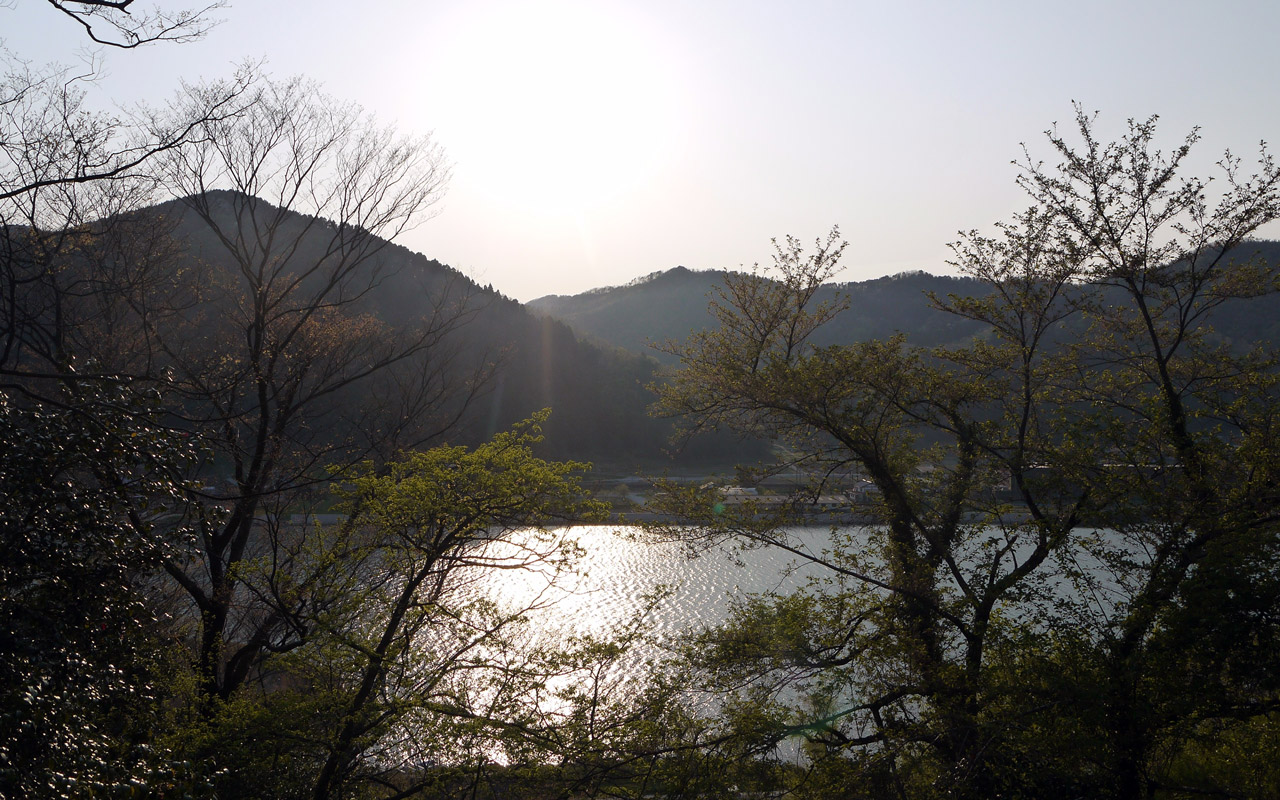
Overall, I'd have to say even though it isn't the easiest place to get to, Genbudō is definitely worth the visit. Especially if you're already nearby in northern Hyogo. I liked the atmosphere, the flowers were beautiful, and I learned a lot about geology.
Just keep in mind that you'll need to take either a boat or a taxi to get from one of the train stations to the museum. The boat from JR Genbudō Station could be canceled for a number of weather reasons, so make sure to call ahead before you plan your trip. And if you want to see what the boat is like (it's only a three minute trip), here's a little video for you thanks to the Genbudō Museum:
Even though the park itself is small, the basalt caves were really impressive. Plus, the park has free admission and the tour guides (who are volunteers, not paid employees!) were extremely nice. If you're a rock fan or just a lover of quiet walks, you should add Genbudō Park to your itinerary.
Mami’s Review
It’s nice to stop by if you are visiting Kinosaki Onsen Town, or nearby. The view is pretty unique, and it’s nice to walk around the little park. Yet, that was it. I wouldn’t come all the way here just to see this.
Genbudō Basalt Caves Park
Additional Information
1339 Akaishi
Toyooka, Hyogo 668-0801
Japan
Genbudō Basalt Caves Park's website
0796-23-3821
